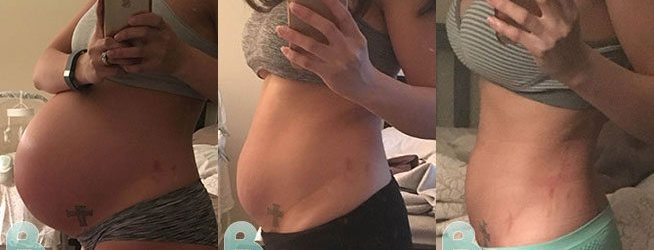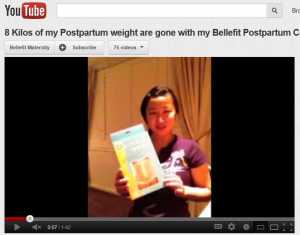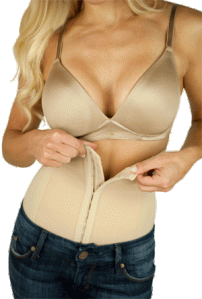A hernia is the result of an organ or tissue protruding through an opening in the muscles. While a hernia can occur in many areas of the body, they most commonly develop in the abdominal and groin areas.
Hernia During Pregnancy
The pressure placed on the abdominal walls increases in intensity as the pregnancy progresses and as the baby increases in size; this pressure is often enough to cause a portion of the intestine or fatty tissue to protrude through a weakened abdominal muscles, resulting in what is known as an abdominal hernia.
Other types of hernias common during pregnancy include:
- Umbilical hernias; the most common form of hernia during pregnancy and occurring right at the navel.
- Paraumbilical hernias; a hernia occurring in the front portion of the abdominal wall, but not right at the belly button.
- Inguinal hernia; a type of hernia that occurs less frequently and is the result of groin muscles that have been weakened by constant pressure of the uterus.
Developing a hernia during the course of your pregnancy is not always an immediate concern; in fact, most physicians recommend waiting until after you give birth to have the hernia treated. However, hernias rarely, if ever, go away on their own and must eventually be treated. Left untreated, a hernia will progressively worsen in severity and eventually become more serious can eventually lead to life-altering complications.
Hernia During Labor
While developing a hernia during pregnancy can be a cause of concern for expecting mothers, it’s reassuring to know that they rarely interfere or prevent a normal, healthy vaginal delivery. Most physicians consider small hernias not to be a serious health concern and often recommend women proceed with normal labor, as it would naturally occur.
However, some hernias, especially those that are large or located low in the abdomen, may be a cause for concern. After evaluating the severity of the hernia, your doctor might recommend a C-section to deliver your baby.
Diagnosis of a Hernia
Most hernias are diagnosed as part of regular physical exam and assessment of your reported symptoms and recent medical history. External hernias often cause a visible bulge that is observable during the physical exam. An internal hernia is a bit more challenging to diagnose and may require an imaging test, such as an ultrasound, MRI, or CT scan, in order to confirm the diagnosis.
Causes of a Hernia During Pregnancy
Hernias typically develop as a result of muscle weakness and increased stress, pressure, or straining on or around the weakened muscle. The majority of hernias are congenital, meaning they are a condition that is present from birth. While anyone can develop a hernia, you often never notice one until it protrudes during your pregnancy.
Risk factors that increase your chances of hernia during pregnancy include:
- Carrying twins or multiples;
- Experiencing long labors during previous pregnancies;
- Having a hernia that was previously repaired;
- Being obese.
Other causes contributing to hernias include:
- Lifting heavy objects;
- Increased abdominal pressure;
- Straining associated with bowel movements;
- Chronic and intense sneezing and/or coughing.
Treatment of Hernia While Pregnant
Many physicians will advise against surgical treatment of a hernia until after your baby is born. While surgery is often the only effective way to treat a hernia, there are several available options to treat and relieve pain and discomfort associated with a hernia during pregnancy.
“Hernia During Pregnancy – American Pregnancy Association.” 19 Feb. 2017, http://americanpregnancy.org/pregnancy-complications/hernia-during-pregnancy/.
Compression provided by an abdominal binder relieves hernia-associated pain and reduces abdominal pressure, which prevents the hernia from increasing in size. Using a pre-partum or postpartum abdominal binder:
- Supports the muscles of your abdomen, reducing pressure and relieving pain associated with a hernia;
- Promotes increased circulation, promoting healing and decreased swelling;
- Makes it easier to walk or engage in comfortable physical activity without pain;
- Provides strength and support to the abdominal muscles.
Surgery to fix a hernia while pregnant should only be considered in the rare case that the hernia is causing a risk to you or to your baby. Typically, physicians recommend delaying postpartum surgery to repair a hernia until a full recovery has been made, which can be anywhere between 3 and 6 months after giving birth.
Surgery to repair a hernia in the abdominal region begins with a tiny incision near the base of the navel. The herniated organ or tissue is corrected by returning it to the abdominal cavity; the abdominal incision is then stitched closed.
After hernia surgery, a postpartum abdominal binder has been found to be useful for:
- Assisting with healing of the surgical incision;
- Relieve pain associated with the surgery;
- Reducing swelling;
- Supporting the strengthening of the abdominal muscles.
Prognosis
It is estimated that hernias may reoccur or reappear in nearly 10% of surgically repaired cases; most patients opting to surgically repair a hernia have little to no issue after surgery. Women who have a hernia surgically repaired prior to a pregnancy are at an increased risk of recurrence during subsequent pregnancies; as are women who become pregnant with multiples, have had previously long labors while giving birth, and are obese.































